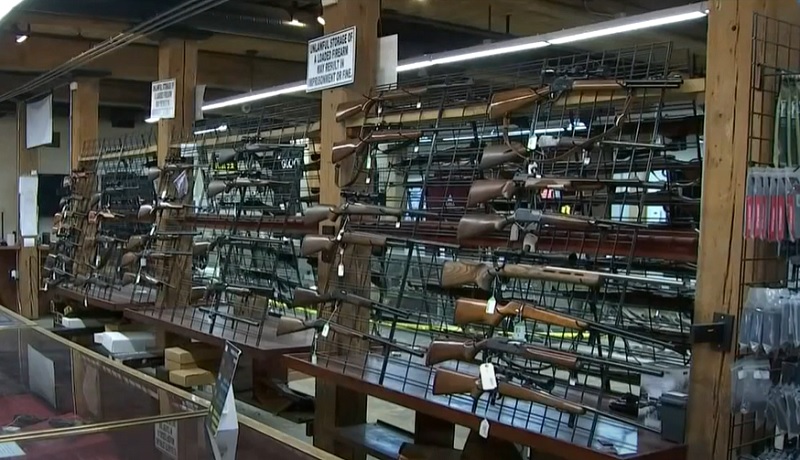
By Steve Pomper
With the intensified efforts toward gun control, it’s a good time to revisit Extreme Risk Protection Orders (ERPO), also called “red flag” laws. Protecting people from a person using a gun to commit violence is important. Some people should not have guns. However, shouldn’t we be suspicious of people who support gun control generally and firearms confiscation specifically who also push for red flag laws? It’s not hard to envision gun control proponents expanding the scope and decreasing the threshold to more aggressively enforce these laws? And, for our purposes, this puts cops at extreme risk of being the bad guys.
At first glance, these orders seem to make sense. Essentially, ERPOs allow police take firearms away from people who threaten to shoot themselves or other people. Taking away a person’s firearms involves suspending a constitutional right. But officers also have the authority to take a person into protective custody for mental health reasons even without guns involved, which takes away their liberty.
But what happens when a “good idea” is vehemently supported by those who have made it clear they endorse gun control to the point of confiscation? There is no argument that ERPOs “allow” officers to confiscate firearms. In fact, that’s the point, right? So, how do cops deal with the proliferation of such laws when the motivations for enforcing them are suspect?
First, objective guardrails should be installed to prevent abuse, political or otherwise. Policies need to err on the side of not violating any of a person’s constitutional rights. Perhaps officers must be required to provide objective, articulable facts the person has demonstrated an “extreme risk” of danger to self or others. Then, it’s more likely the entire endeavor becomes constitutional, having provided due process. Otherwise, these orders can be abused.
For example, I was once dispatched to a call of a barricaded, suicidal man reportedly with guns in his apartment. Once contacted, the powers-that-be ordered officers to take the man to the hospital for an involuntary mental health evaluation. The problem: the man said he wasn’t suicidal, officers didn’t find any guns in his apartment, and the complainant was a bitter ex-girlfriend. Now, that was a red flag. But commanders seemed more interested in “justifying” the resources used than in protecting the man’s constitutional rights.
Washington State has been in the forefront of red flag laws, which is not a surprise since it has long been an anti-gun rights Democrat state. Reportedly, there are still 30 states that do not have red flag laws. Biden has directed the DOJ to create “model legislation” that’ll make it easier for these states to enact such laws.
Again, how can we trust anti-gun rights politicians to approach ERPO enforcement honestly? We know their ultimate goal is to disarm law-abiding citizens. Seattle Police Department (SPD) A/Lt. Eric Pisconski, in The Columbian, described ERPOs as “a scalpel, not a hammer.” I worked with him while I was still active, and he’s right. However, we can’t always count on a responsible person commanding such units as Pisconski’s SPD Crisis Response Unit.
For example, I recall an officer writing an article back in the 90s for our police union newspaper. In the article, the officer argued, strangely, that simply having a gun in the house could make a person suicidal. In my response article, I counter-argued having a gun in the house might make suicidal people more likely to use a gun to kill themselves, but it didn’t make them suicidal.
Pisconski nails it when he says the ERPO applies to people who are “demonstrating threatening behavior and have access to firearms.” How “demonstrating” is defined is crucial. In the above example, an embittered ex-girlfriend was apparently enough for commanders to “demonstrate” the man was a threat, in that case, to himself. If he did have guns, it’s likely officers would have been ordered to confiscate them.
We also must ask, do these laws even work? It seems the jury is still out. The founder of the Second Amendment Foundation, Alan Gottlieb, said, “One thing for sure is that it did not lower the homicide rate as promised and sold to the public.”
King County (WA) published a report in Injury Epidemiology analyzing the county’s ERPOs in 2018 and 2018. One of the report’s authors, Shannon Frattoroli said, “if you ask me … what the biggest impact of this law will be, without hesitation in my mind, it’s going to be suicide.”
Since 60 percent of gun deaths nationally and 75 percent in Washington State are from suicide, this is not a surprise. But suicide is not what people think of when they think about “gun violence.” And, since these folks are already suicidal, won’t taking a gun away just have them using alternate means to kill themselves?
Like the “assault weapons” ban, after 10 years, studies may show red flag laws were also a bust. So, it’s important for people to know that a majority of the “gun violence” statistics are not about people shooting each other with “assault rifles.” It’s about people shooting themselves with handguns. And the vast majority people who are shooting each other are also using handguns, not rifles.
Again, politicians, judges, and prosecutors who abuse these laws place police officers in the position of straddling that line between public safety and constitutional rights. Now, this is a place officers naturally fall into. However, the lines are much clearer in situations that don’t involve biased enforcement of red flag laws.
Recently, SCOTUS ruled against officers on a related “red flag law” case. They ruled officers unintentionally violated the 4th Amendment by entering a house belonging to a man reported to be suicidal. Though he denied being suicidal, they went in and confiscated his guns. Justices also pointed out there are still many questions related to red flag laws that need to be adjudicated.